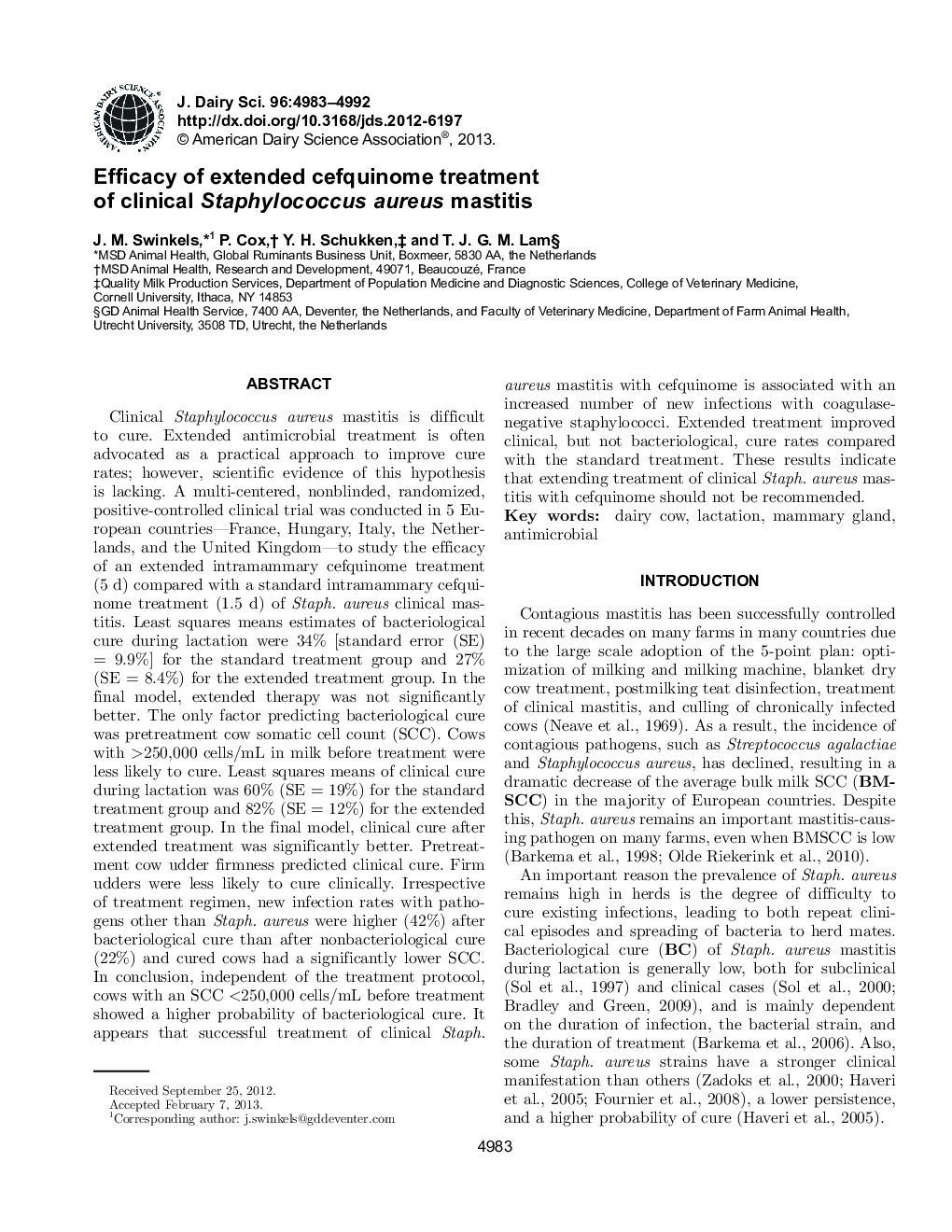| Article ID | Journal | Published Year | Pages | File Type |
|---|---|---|---|---|
| 2438879 | Journal of Dairy Science | 2013 | 10 Pages |
Abstract
Clinical Staphylococcus aureus mastitis is difficult to cure. Extended antimicrobial treatment is often advocated as a practical approach to improve cure rates; however, scientific evidence of this hypothesis is lacking. A multi-centered, nonblinded, randomized, positive-controlled clinical trial was conducted in 5 European countries-France, Hungary, Italy, the Netherlands, and the United Kingdom-to study the efficacy of an extended intramammary cefquinome treatment (5 d) compared with a standard intramammary cefquinome treatment (1.5 d) of Staph. aureus clinical mastitis. Least squares means estimates of bacteriological cure during lactation were 34% [standard error (SE)Â =Â 9.9%] for the standard treatment group and 27% (SEÂ =Â 8.4%) for the extended treatment group. In the final model, extended therapy was not significantly better. The only factor predicting bacteriological cure was pretreatment cow somatic cell count (SCC). Cows with >250,000 cells/mL in milk before treatment were less likely to cure. Least squares means of clinical cure during lactation was 60% (SEÂ =Â 19%) for the standard treatment group and 82% (SEÂ =Â 12%) for the extended treatment group. In the final model, clinical cure after extended treatment was significantly better. Pretreatment cow udder firmness predicted clinical cure. Firm udders were less likely to cure clinically. Irrespective of treatment regimen, new infection rates with pathogens other than Staph. aureus were higher (42%) after bacteriological cure than after nonbacteriological cure (22%) and cured cows had a significantly lower SCC. In conclusion, independent of the treatment protocol, cows with an SCC <250,000Â cells/mL before treatment showed a higher probability of bacteriological cure. It appears that successful treatment of clinical Staph. aureus mastitis with cefquinome is associated with an increased number of new infections with coagulase-negative staphylococci. Extended treatment improved clinical, but not bacteriological, cure rates compared with the standard treatment. These results indicate that extending treatment of clinical Staph. aureus mastitis with cefquinome should not be recommended.
Related Topics
Life Sciences
Agricultural and Biological Sciences
Animal Science and Zoology
Authors
J.M. Swinkels, P. Cox, Y.H. Schukken, T.J.G.M. Lam,
